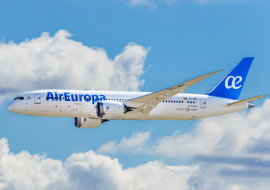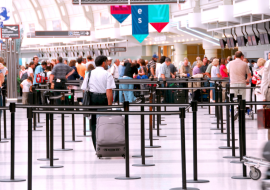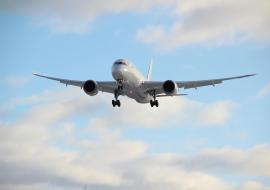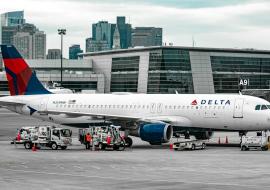Spirit Airlines Faces Financial Turbulence: A Look at its Journey and Challenges

Spirit Airlines, a once-thriving low-cost carrier, has seen its shares plunge to record lows as it reportedly explores filing for Chapter 11 bankruptcy. Facing an October 21 deadline to refinance over $1 billion in debt, the airline is grappling with significant financial and operational hurdles, marking a potential turning point in its long history of ups and downs.
Spirit Airlines, originally founded in 1983 as Clipper Trucking Company, began as a cargo service before shifting to air transportation in 1992, when it rebranded as Spirit Airlines. By the mid-1990s, Spirit had transitioned fully into the airline industry, offering domestic flights in the U.S., and later expanding to international destinations in the Caribbean and Latin America. Spirit quickly earned a reputation for its ultra-low-cost model, providing low base fares while charging passengers for additional services like seat selection, carry-on luggage, and in-flight refreshments.
Throughout its history, Spirit has targeted budget-conscious travelers, pioneering the "no-frills" approach to air travel that has since been imitated by many competitors. The airline became known for its bright yellow planes and cheeky marketing campaigns, often touting ultra-cheap base fares.
A Legacy of Financial Struggles
Despite its initial success, Spirit Airlines has faced significant financial struggles over the years. The airline's no-frills business model, while popular with certain customer segments, has often come under scrutiny for its numerous fees, leading to mixed customer reviews and frequent backlash. Moreover, Spirit’s operations have been marked by punctuality issues, making it a subject of ridicule by late-night talk show hosts and frustrated passengers alike.

However, prior to the COVID-19 pandemic, Spirit was performing well financially, consistently turning profits and becoming one of the fastest-growing airlines in the U.S. The pandemic, though, brought a halt to global travel and hit airlines particularly hard, and Spirit was no exception. Since 2020, the carrier has struggled to regain its footing, posting continuous financial losses.
In 2022, Spirit’s attempt to merge with Frontier Airlines was disrupted by JetBlue Airways, which swooped in with its own bid to acquire Spirit. After a heated bidding war, Spirit shareholders ultimately accepted JetBlue's offer, viewing it as a pathway to increased competitiveness and financial stability. However, the acquisition was blocked by a federal judge in early 2024 on antitrust grounds, dealing a severe blow to Spirit's plans for the future.
The failure of the JetBlue merger left Spirit to navigate its financial troubles alone. In addition to the blocked acquisition, Spirit has been hit hard by several other factors, including a major engine recall from Pratt & Whitney and changing travel behaviors post-pandemic. These challenges, combined with rising operational costs, have deepened the airline’s financial woes.
To stave off disaster, Spirit has spent much of 2024 attempting to cut costs and stabilize its operations. The airline has taken drastic measures such as furloughing pilots, reducing flights, and delaying new Airbus aircraft orders. Yet despite these efforts, Spirit has continued to bleed money, reporting a $193 million loss in the second quarter of the year. The airline now faces an imminent deadline to refinance its $1.1 billion in debt, which is backed by its loyalty program and due in September 2025.
Bankruptcy Considerations
Reports indicate that Spirit Airlines is exploring the possibility of filing for Chapter 11 bankruptcy protection—a move that could allow the carrier to restructure its debts while continuing operations. While the company has not confirmed these reports, CEO Ted Christie reassured staff that Spirit is engaged in "productive conversations" with bondholders and is focused on returning to profitability.
Spirit's stock has plummeted nearly 90% this year, closing at a record low of $1.69 on Friday, October 4. Competitor Frontier Airlines, which had once sought to merge with Spirit, saw its shares surge by 16% on the same day, while other airlines also rallied.
As Spirit navigates through this financial turbulence, the future of the airline remains uncertain. Its pioneering no-frills approach changed the industry and inspired many imitators, but the low-cost model alone may not be enough to sustain the airline in today’s competitive and evolving travel market. For Spirit to recover, it will need to manage its debt, adjust to shifting consumer patterns, and find a way to compete against larger rivals that have adopted similar pricing strategies.
The coming weeks will be critical for Spirit Airlines, as it explores all available options to stabilize its finances and return to the skies with a viable business plan.














